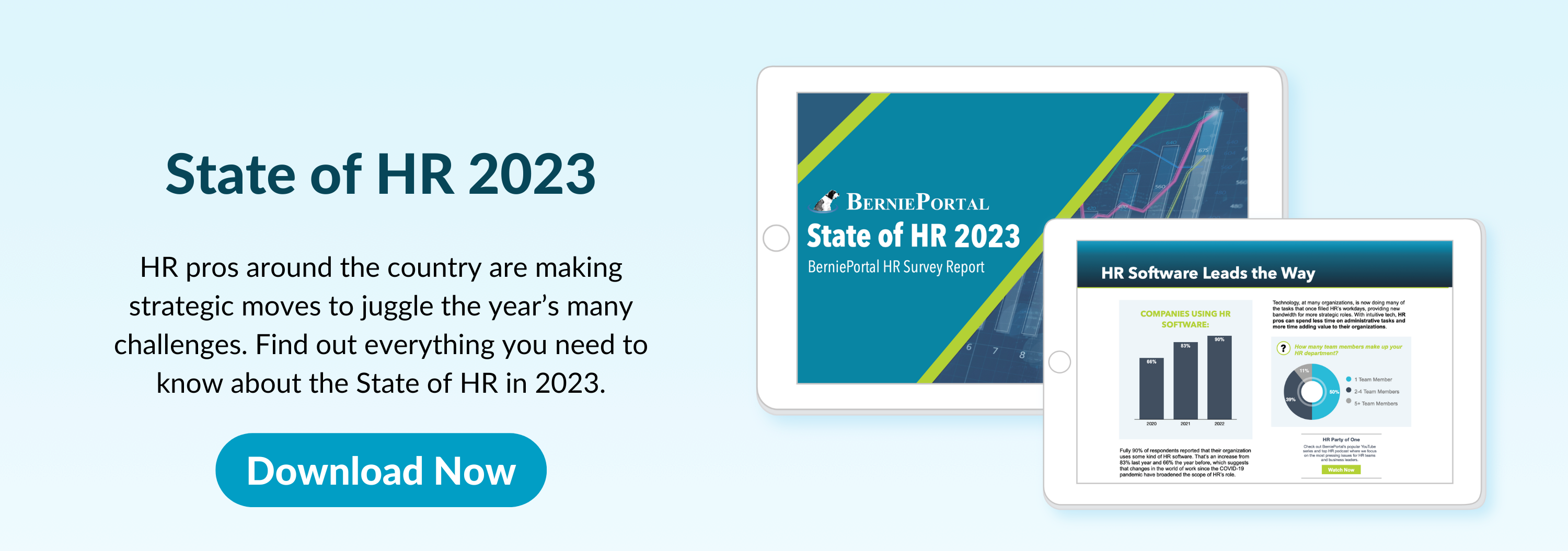
Written by
Sara Loomis
Sara is an aPHR-certified writer on the marketing team at BerniePortal. She writes about HR, healthcare, and benefits.
The 4-Day Workweek: Pros, Cons, and Alternatives to Consider

Over the past few years, the international nonprofit organization 4 Day Week Global has been leading organizations in the transition from the traditional five-day, 40-hour workweek to a new model. Employees in these trials spend six months working 32 hours across a four-day week with no reduction in pay or benefits. In turn, they’re expected to maintain 100% of their productivity in 80% of the time.
Results from the first large-scale trial of the four-day workweek are now in, and in short, people love it. But what does it really mean for an organization to cut back to 32-hour weeks, and what are your options if that’s just not possible? Read on to find out.
Advantages of Switching to a 4-Day Workweek
It’s easy to imagine some of the pros of this trending work model for employees. Who doesn’t want to work less for the same pay and benefits? But there are advantages for the organization as well.
- A low-cost benefit. In an uncertain economy, many organizations are cutting back on benefits to save money. But a shorter week has very little direct cost to the organization, and so far most of the trials have been successful at keeping up full productivity on the abbreviated schedule.
- A more diverse team. Fewer days in the office supports multiple populations who can face barriers to 40-hour weeks. Working parents (disproportionately women) can save money on childcare. People with disabilities may be attracted to a less demanding schedule or less time commuting. And people of color may experience greater psychological safety and fewer microaggressions than they did on a five-day week.
- Improved retention. Evidence here is still anecdotal, since the trials are only six months long. But organizations tend to report team members staying on longer and turnover decreasing when they make the switch.
Drawbacks of the 4-Day Workweek
As the rave reviews pour in, it’s important to keep a balanced perspective. No work model is perfect, and the four-day workweek does introduce some special challenges your organization will have to consider.
- Accommodating hourly workers. Nonexempt employees who are paid hourly add an extra level of complexity to the situation. You may have to give them all 25% hourly raises—but then what happens to your bottom line when they get overtime? Balancing the change between hourly and salaried employees might end up being more trouble than it’s worth.
- Potential for burnout. Giving employees every Friday or Monday off is designed in part to avoid burnout, but in the long term, it could actually cause some team members to burn out. When the new-work-schedule smell wears off, some employees may struggle to keep up with the faster pace during their shorter weeks and burn out sooner.
- Scheduling challenges. If your company operates in the service industry—where turnover is especially high—you may already be open seven days a week. Cutting back weekly shifts from five to four could exacerbate a difficult staffing situation and force you to adjust your hours, potentially losing customers.
- Busy season. Here at BerniePortal, Q4 is by far our busiest time of the year. For some industries, that time might be summer, or tax season, or back-to-school. Whenever it is, if your organization makes its biggest progress during the busy season, it might be unrealistic to implement shorter weeks all year long.
4-Day Workweek Alternatives for Culture and Retention
So what can you do to get the benefits of a four-day workweek without totally turning your work model upside down? It depends on why you’re looking for a change, but here are several options your organization can try if you want to recruit top talent, boost retention, increase flexibility, and reduce burnout on your teams—all for almost no cost to your bottom line.
- 4/10 model. If you can’t commit to the full 32-hour-week model, there may be a middle ground. What about offering employees the option to work four 10-hour days rather than five 8-hour days? They’d get the advantage of longer weekends without you giving up the 40-hour model. For another option, four nine-hour days would come out to 36-hour weeks.
- No-meeting day. One commonly cited cause of burnout is teams having too many meetings to get their own work done. Assigning a day each week without meetings—and sticking to it—gives employees time for uninterrupted deep focus so they can make big strides on their major projects.
- Summer Fridays. It doesn’t have to be summer, but picking a period during your slower season to offer either Fridays off or half-day Fridays can boost morale and show employees you recognize how hard they worked when business was busier—a powerful recruitment and retention tool.
- Flexible hours. To the extent it’s reasonable for your organization, consider letting team members control when they work. Offer the option to come in earlier or later, shorten or extend lunch, or work from home when possible. You’ll get the same total weekly hours from your team, and they’ll get the flexibility to work when they’re at their best.
- More (or unlimited) paid time off. A generous PTO policy lets employees pick their own best days off, which could be even more valuable than a predetermined four-day week. Or consider offering unlimited PTO, in which employees decide when and how much PTO to take, as long as tasks are accomplished as expected and the organization does not suffer negative repercussions. Used wisely, an unlimited PTO policy can help build a culture of mutual respect on your team.
The growing popularity of the four-day workweek is a great reminder that all organizations are unique. No two businesses have the same needs, and “the way it’s always been done” isn’t always the best way forward. It’s crucial for HR pros to keep innovating how they support their people in order to build vibrant, diverse teams that align with both the company’s goals and the future of work.
Additional HR Resources
You can stay informed, educated, and up-to-date with important HR topics using BerniePortal’s comprehensive resources:
- BernieU—free online HR courses, approved for SHRM and HRCI recertification credits
- Resource Library—tools, templates, and checklists on an extensive list of HR topics
- BerniePortal Blog—a one-stop shop for HR industry news
- HR Glossary—featuring the most common HR terms, acronyms, and compliance
- HR Party of One—our popular YouTube series and podcast, covering emerging HR trends and enduring HR topics

Written by
Sara Loomis
Sara is an aPHR-certified writer on the marketing team at BerniePortal. She writes about HR, healthcare, and benefits.
Related Posts
The first impression an employer makes is just as important (if not more important) than...
Organizations usually take one of four major approaches when talking about pay.
SHRM states that for HR, overlooking social media today would be like “ignoring e-mail 20...
Recruiting, acquiring, and keeping the right employees for your organization is the best...









Submit a Comment